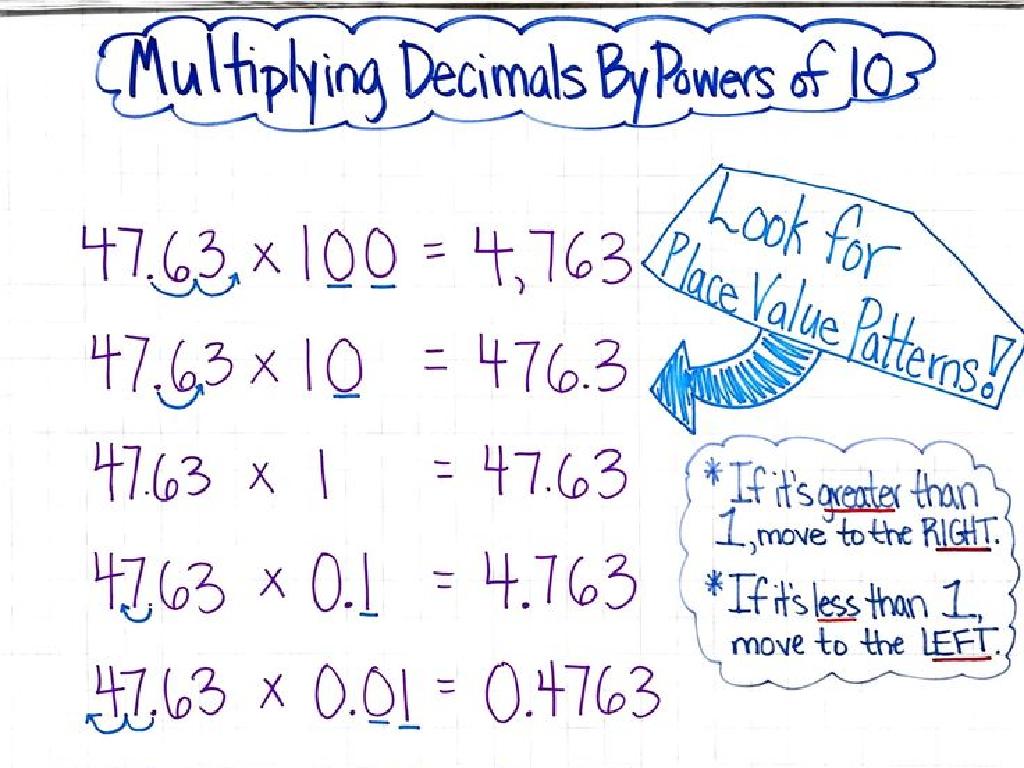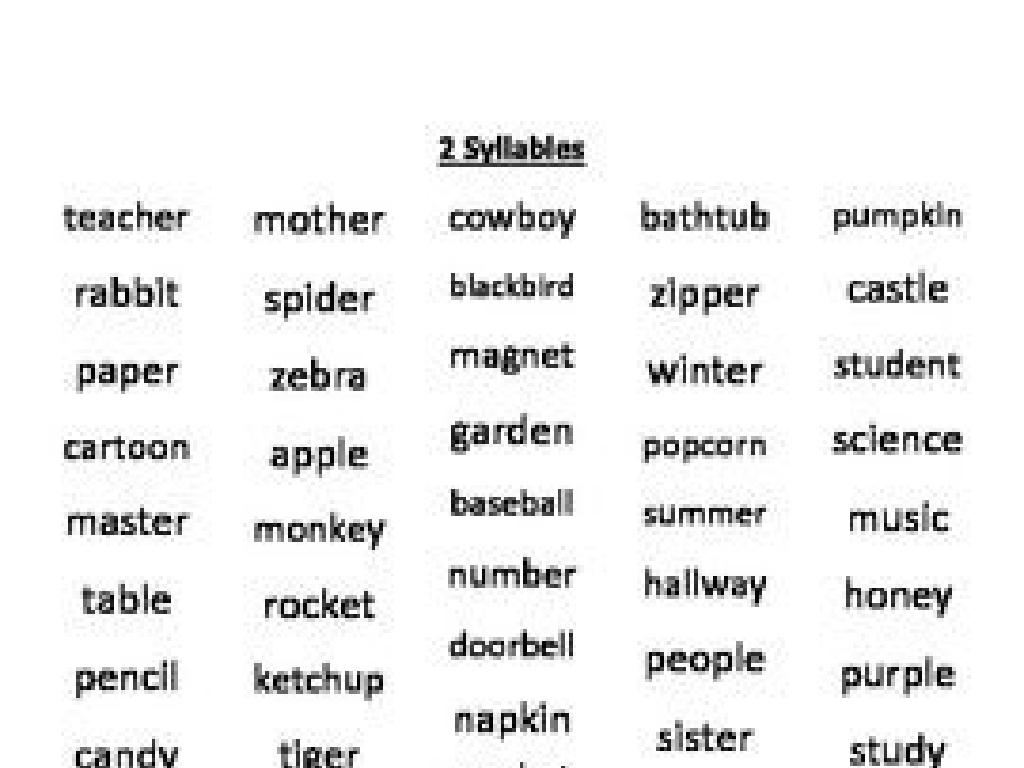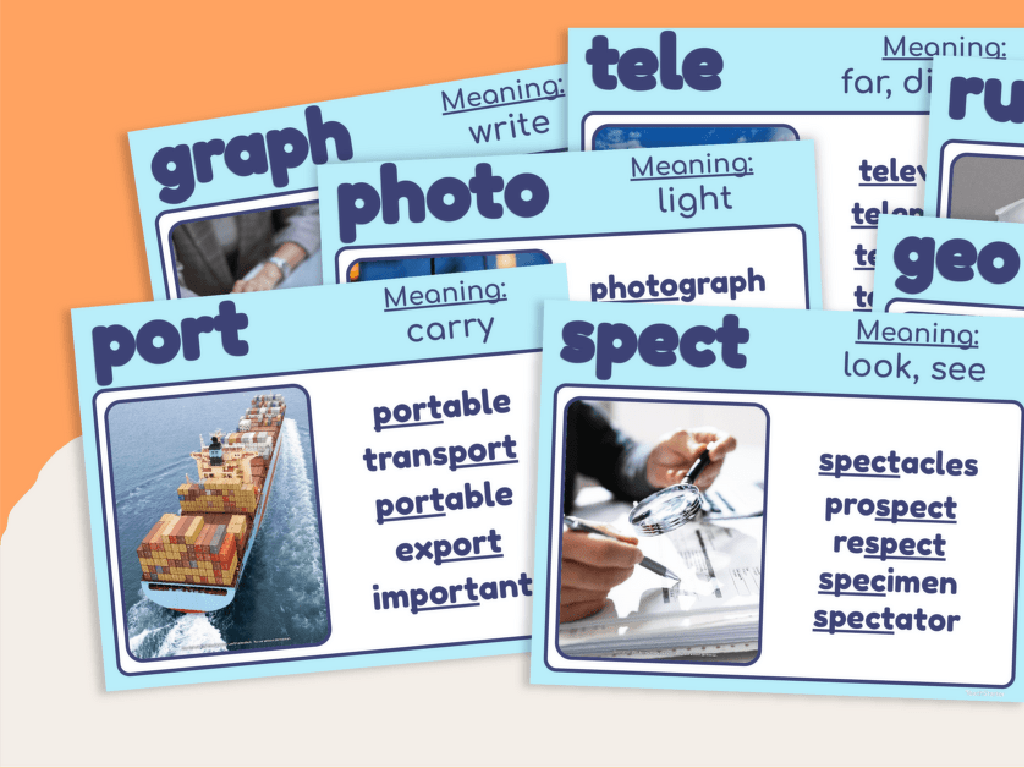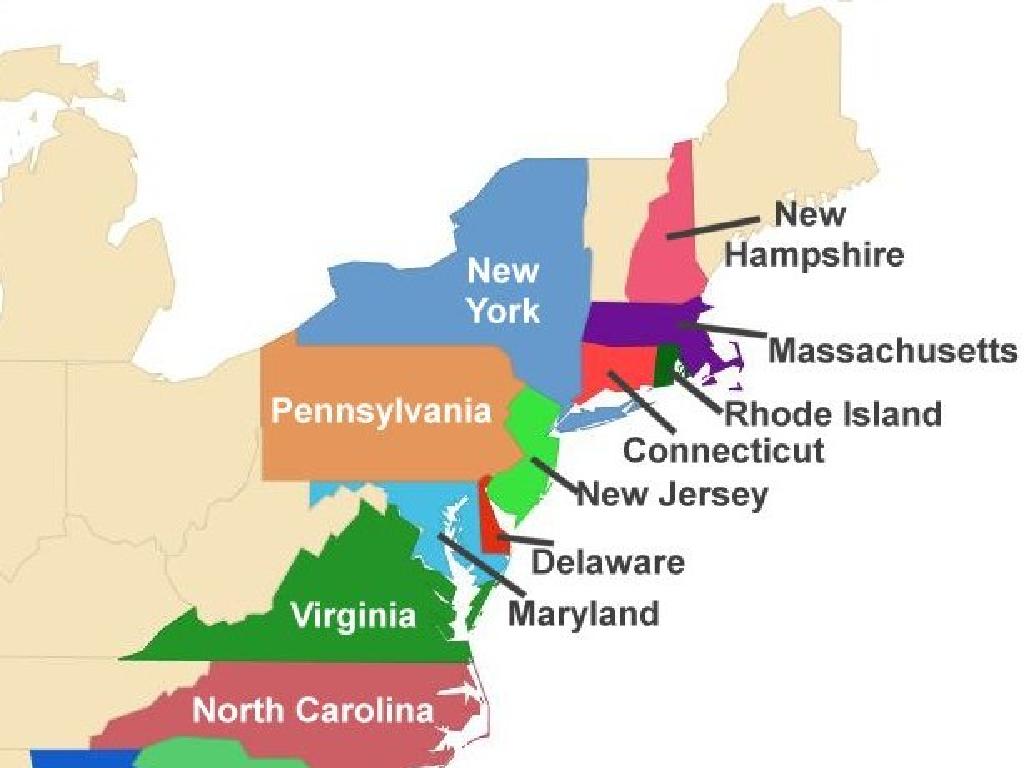Scalene, Isosceles, And Equilateral Triangles
Subject: Math
Grade: Fifth grade
Topic: Triangles
Please LOG IN to download the presentation. Access is available to registered users only.
View More Content
Exploring Triangle Types
– What is a triangle?
– A shape with three sides and three angles
– Types of triangles
– Scalene, isosceles, and equilateral triangles
– Triangle uses in daily life
– Buildings, bridges, and art often use triangular shapes
– Activity: Find triangles around you
– Look for triangles in the classroom or at home and describe them
|
Begin the lesson by defining a triangle and discussing its basic properties, such as having three sides and three angles. Introduce the three types of triangles: scalene (no equal sides), isosceles (two equal sides), and equilateral (all sides equal). Explain how triangles are a fundamental part of structures and design in the world, providing strength and stability. Engage the students with an activity where they search for and identify triangles in their environment, encouraging them to observe the variety of triangles that exist around them. This activity will help solidify their understanding of triangle types and their properties.
Exploring Triangles
– A triangle has three sides and angles
– Think of it like a slice of pie with three edges
– Angles always add up to 180 degrees
– No matter the triangle, angles always total 180°
– Triangles: A basic geometric shape
– They’re the simplest polygon, foundational in geometry
|
This slide introduces the concept of triangles to fifth-grade students. Begin by explaining that a triangle is a three-sided shape, which they may recognize from objects like road signs or musical instruments. Emphasize that regardless of the type of triangle, the angles inside it always add up to 180 degrees. This is a fundamental rule in geometry that they will use in many future math problems. Use visual aids like drawings or physical models to help students visualize different types of triangles. Encourage students to find triangles in the classroom or at home to connect the lesson to real-life objects.
Exploring Triangle Types
– Triangles: Sides & Angles
– Scalene Triangle
– No equal sides or angles
– Isosceles Triangle
– Two equal sides and angles
– Equilateral Triangle
– All sides and angles are equal
|
This slide introduces students to the classification of triangles based on their sides and angles. A scalene triangle has no equal sides or angles, making each one unique. An isosceles triangle has two sides of the same length and two equal angles opposite those sides. An equilateral triangle is a special case where all sides and angles are equal, each angle being 60 degrees. Use real-life objects to help students visualize these types, such as a slice of pizza for an isosceles triangle or a road sign for an equilateral triangle. Encourage students to draw their own examples and to identify triangles in the classroom or at home.
Exploring Scalene Triangles
– All sides different lengths
– Each side has a unique length
– No equal angles
– Each angle has a different measure
– Example: 5 cm, 6 cm, 7 cm triangle
– A triangle with sides of 5 cm, 6 cm, and 7 cm is scalene
|
This slide introduces students to scalene triangles, emphasizing their defining properties: no sides of the same length and no equal angles. Use the example of a triangle with sides measuring 5 cm, 6 cm, and 7 cm to illustrate a concrete case of a scalene triangle. Encourage students to draw their own scalene triangles with different side lengths and measure the angles to reinforce the concept. Discuss how scalene triangles differ from isosceles and equilateral triangles, which will be covered in subsequent lessons. This foundational understanding will be crucial as they progress in their study of geometry.
Exploring Isosceles Triangles
– Isosceles triangle definition
– A triangle with at least two equal sides
– Two equal sides and angles
– The angles opposite the equal sides are also equal
– Example: 5 cm, 5 cm, 4 cm triangle
– Sides: 5 cm, 5 cm (equal), Base: 4 cm
|
An isosceles triangle is one with two sides of the same length, which also means the angles opposite those sides are equal. This is a key concept for students to understand as it relates to symmetry and congruence in geometry. Use the example of a triangle with sides measuring 5 cm, 5 cm, and 4 cm to illustrate this point. Have students draw their own isosceles triangles and measure the sides and angles to reinforce the concept. Discuss how identifying the properties of isosceles triangles can help in solving problems involving geometry.
Exploring Equilateral Triangles
– All sides are equal in length
– Each angle is 60 degrees
– Perfectly balanced triangle
– All sides and angles are the same, making it symmetrical
– Example: Sides of 5 cm each
– A triangle with three 5 cm sides shows equal sides and angles
|
This slide introduces students to the concept of equilateral triangles, a key type of triangle in geometry. Emphasize that in an equilateral triangle, not only are all three sides the same length, but all three angles are also equal, each measuring 60 degrees. This makes the equilateral triangle a perfect example of symmetry in shapes. Use the example of a triangle with 5 cm sides to help students visualize and understand the concept. Encourage students to draw their own equilateral triangles and measure the sides and angles to reinforce their understanding.
Comparing Triangles: Types and Characteristics
– Different types of triangles
– Scalene: all sides different lengths, Isosceles: two sides equal, Equilateral: all sides equal
– Side lengths and angles
– Angles also help identify the type: acute, right, obtuse
– Scalene triangle properties
– No equal sides or angles, sides/angles all unique
– Isosceles and equilateral traits
– Isosceles: two equal sides/angles, Equilateral: all sides/angles equal
|
This slide aims to help students understand the differences and similarities between scalene, isosceles, and equilateral triangles. Emphasize that the length of the sides and the measure of the angles are key to classifying the type of triangle. A scalene triangle has no equal sides or angles, making it unique. An isosceles triangle has two sides and two angles that are the same, and an equilateral triangle has all sides and angles equal. Use diagrams to illustrate each type and encourage students to draw their own examples. Discuss how to measure sides and angles, and how these measurements determine the classification of the triangle.
Class Activity: Triangle Exploration
– Build triangles with straws
– Measure sides and angles
– Confirm triangle types
– Use a ruler for sides, protractor for angles
– Present your findings
– Explain how your triangle fits its category
|
This hands-on activity is designed to help students understand the properties of scalene, isosceles, and equilateral triangles by constructing them. Provide students with straws and connectors to build the triangles. Once built, they should use rulers to measure the sides and protractors to measure the angles, confirming the type of triangle they’ve created. Encourage students to share their triangles with the class and explain their reasoning. For example, a triangle with all sides of different lengths is scalene, with two sides the same is isosceles, and with all sides equal is equilateral. This activity will reinforce their understanding of triangle properties and enhance their ability to classify triangles correctly.






